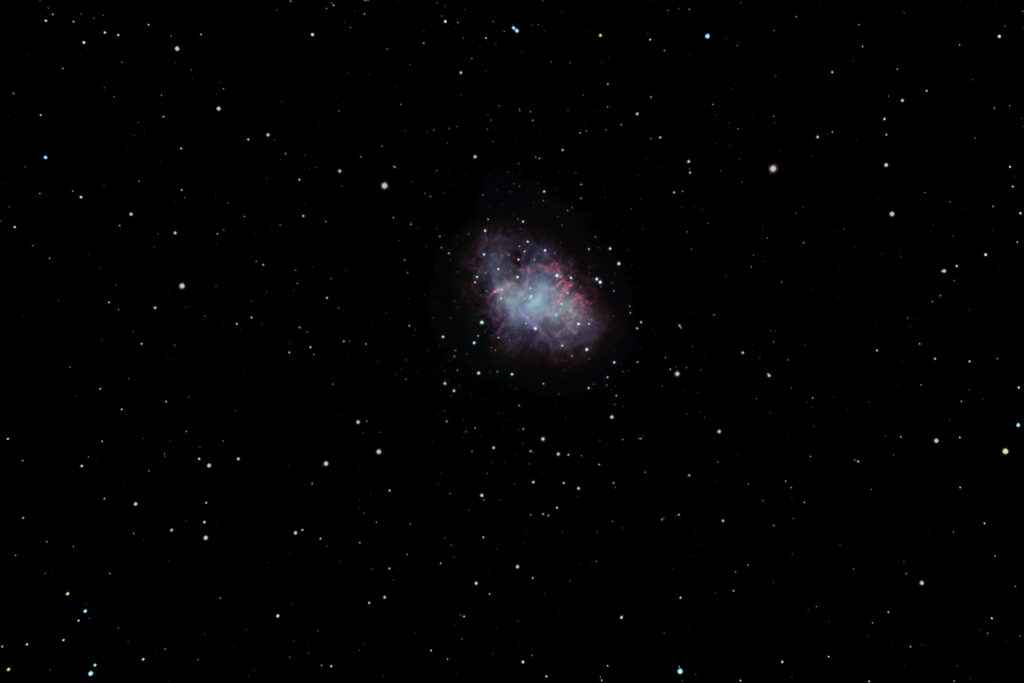The greatest Fourth of July extravaganza in human history occurred on July 4, 1054. On that date Chinese astronomers noticed a strange phenomenon--a "star" that was clearly visible in broad daylight! This new star was visible for 23 days during daylight hours, and then dimmed to an object that could be seen at night for another two years (in the constellation Taurus).
We now know that this new star was in fact a "Type II" supernova--a cataclysmic explosion of a single star at the end of its burning cycle. The energy output from such an event rivals the combined energy of the rest of the galaxy! Think about that for a moment. A single star emits the energy of 200 billion stars. The prodigious energy and heat associated with such events is the only known means of overcoming the powerful force of electrostatic replusion (like charges repel) and forming elements heavier than iron (atomic number 26) through nuclear fusion by a process called "supernova nucleosynthesis."
It is now a thousand years since the supernova that occurred in 1054. This image depicts the remnant of that explosion. The object is commonly called the Crab Nebula, or "M1" (the first entry in the logbook of the 18th century French comet hunter Charles Messier). At its center is the core of the exploded star, which is now a bizarre "neutron star" no more than a few miles in diameter and so dense that a teaspoonful would weigh a billion tons. This object rotates 30 times per second, and emits a distinctive sound upon each rotation.
To hear this sound, visit this website, http://www.jb.man.ac.uk/~pulsar/Education/Sounds/sounds.html.
One final note. The supernova of 1054 occurred within weeks of the decision by the Eastern Catholic Church to split from Rome, and form the Eastern Orthodox Church. If the supernova was an epiphany, its significance remains unclear.
The "Crab Nebula" (M1) in Taurus
Date Taken:October 30, 2008
Location Taken: Conditions of Location:FWHM 2.1
Equipment Used:14.5" Ritchey-Chretien telescope, SBIG STL11000 CCD camera, Astrodon RGB filters, TCC, PIR, remote guide head used with Takahashi Sky90 for autoguiding, T-Point used for polar alignment (required for each imaging session due to my portable setup).
Processing Used:5x300 seconds RGB, 10x600 seconds luminance (total exposure time of 3 hours) , 1x1 binning, combined in Maxim and processed in Photoshop, periodic Paramount mount error 0.4'/-1.8'
Distance from Location:6,300 light years
Constellation:Taurus (the "bull")
Other Link:
